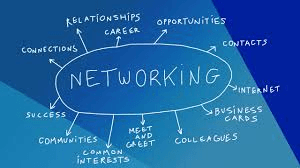Networking: The Backbone of Modern Connectivity
Networking forms the foundation of our interconnected world, enabling the seamless exchange of information across devices and systems. From personal communications to global enterprises, networking technologies drive innovation and efficiency. Understanding its principles and applications is key to navigating the digital age.

Michael Zhang
Michael Zhang is a cloud architecture specialist and digital transformation consultant with 15 years of experience in enterprise technology. As the former head of cloud strategy at a Fortune 500 company and current industry advisor, he helps organizations navigate their cloud journey. Michael holds AWS, Azure, and Google Cloud certifications and frequently contributes to leading technology publications.
What is Networking?
Networking refers to the practice of connecting computers and other devices to share resources and information. It encompasses a range of technologies, protocols, and infrastructures that ensure reliable and secure communication.
Types of Networking
- Local Area Network (LAN): Covers a small geographical area like a home, office, or school.
- Wide Area Network (WAN): Spans large areas, connecting multiple LANs.
- Wireless Networks: Enables communication without physical cables using Wi-Fi, Bluetooth, or cellular technologies.
- Virtual Private Networks (VPNs): Creates secure, encrypted connections over the internet.
Key Components of Networking
- Routers: Direct data packets between networks.
- Switches: Connect devices within a network and manage data flow.
- Servers: Store and manage network resources and applications.
- Protocols: Define the rules for data transmission, such as TCP/IP and HTTP.
Applications of Networking
- Communication: Email, messaging, video conferencing.
- Cloud Computing: Accessing resources and applications over the internet.
- E-Commerce: Enabling online transactions and digital marketplaces.
- IoT (Internet of Things): Connecting smart devices for automation and monitoring.
Challenges in Networking
- Security Risks: Protecting data from cyber threats and unauthorized access.
- Bandwidth Management: Ensuring efficient data transmission without bottlenecks.
- Compatibility Issues: Integrating diverse devices and technologies.
- Scalability: Expanding networks to meet growing demands.
The Future of Networking
Advancements in networking technologies, such as 5G, edge computing, and quantum networking, are poised to revolutionize connectivity. These innovations promise faster speeds, lower latency, and more robust security, paving the way for smarter cities, autonomous vehicles, and next-gen applications.
Comment Section
Comments:
Be the frist to share your thougts